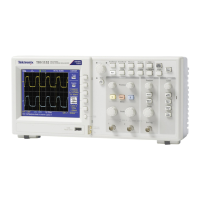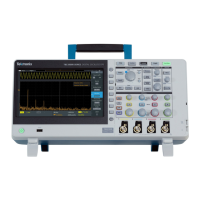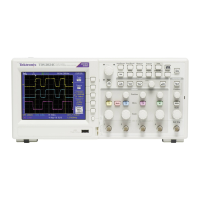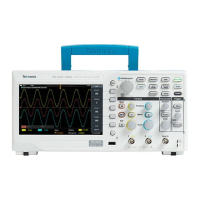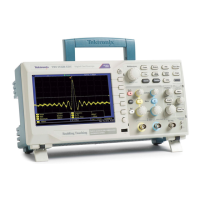Reference
Push this knob t
o automatically sets the Trigger Level to be about halfway
between the minimum and maximum voltage levels. This can frequently help to
quickly stabilize a waveform.
Force Trig Button. Use the Force Trig button to complete the waveform
acquisition whether or not the oscilloscope detects a trigger. This is useful for
single sequ
ence acquisitions and Normal trigger mode. (In Auto trigger m ode,
the oscilloscope automatically forces triggers periodically if it does not detect a
trigger.)
Trigger View. Push the Trigger Menu button for more than 1.5 seconds to
enable the Trigger View mode and display the conditioned trigger signal on the
oscillos
cope. You can use this mode to see the following types of information:
Effects of the Trigger Coupling option
AC Line trigger source (Edge Trigger only)
Signal connected to the Ext Trig BNC
Holdoff. You can use the Trigger Holdoff function to p roduce a stable display of
compl
ex waveforms, such as pulse trains. Holdoff is the time b etween w hen
the oscilloscope detects one trigger and when it is ready to detect another. The
oscilloscope will not trigger during the holdoff time. For a pulse train, you can
adjust the holdoff time so the oscilloscope triggers only on the first pulse in the
train.
To use Trigger Hold off, push the Trigger ► - more - page 1 of 2 ► Set Trigger
H
oldoff option button and turn the Multipurpose knob to adjust the holdoff. The
resolution of the trigger holdoff varies depending on the horizontal scale setting.
TBS1000B and TBS1000B-EDU Series Oscilloscopes User Manual 101
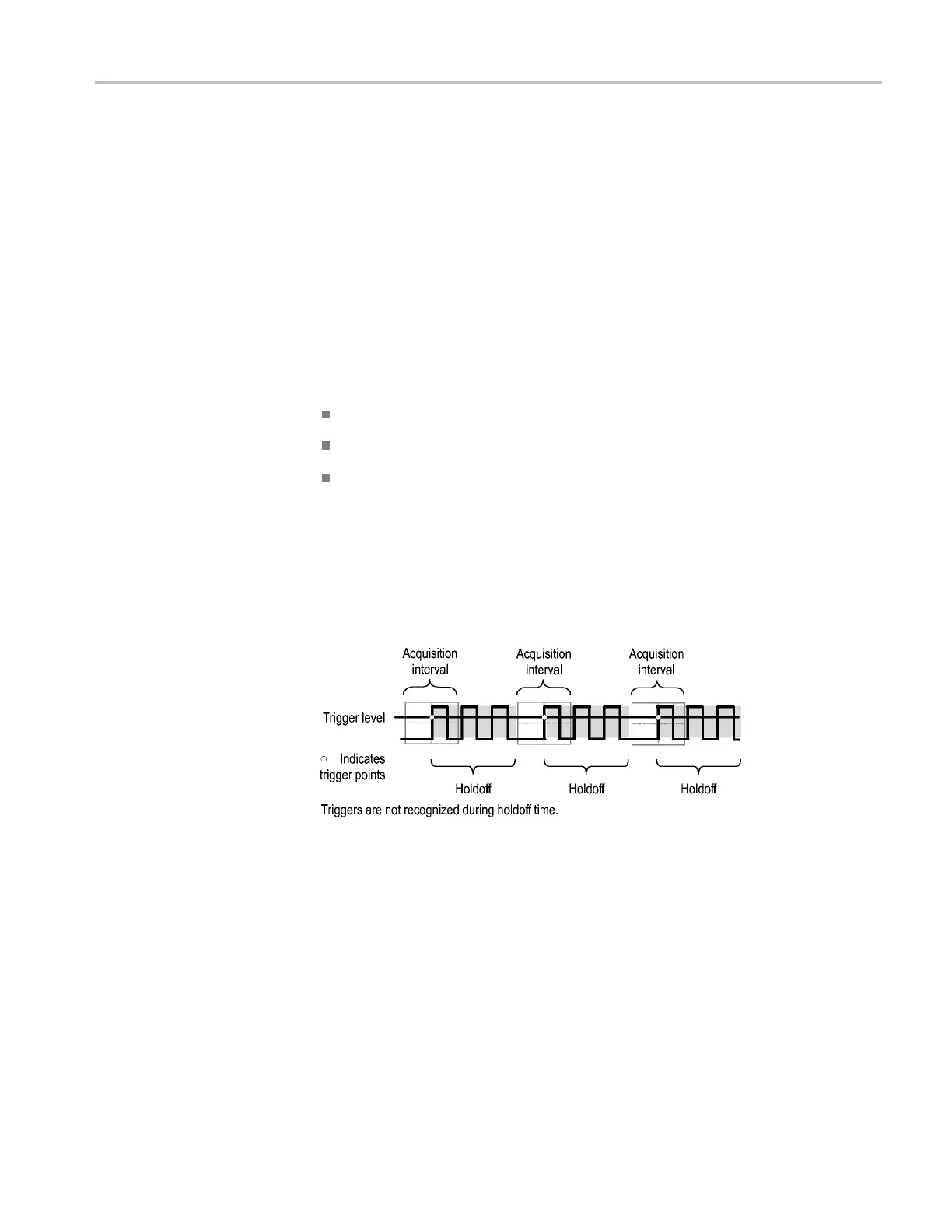